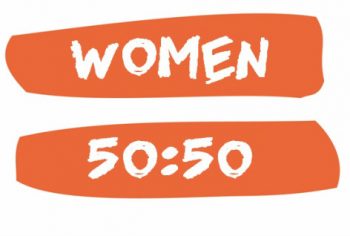By Talat Yaqoob, Chair and Co-Founder of Women 5050
Today, the Scottish Parliament debated the report by the Commission on Parliamentary Reform (read here). This reform process was critical for women, not only to ensure that we push for gender balance, but to make way for more inclusive practice throughout our parliament. After the revelation in 2016, that the Scottish Parliament Bureau and Scottish Parliament Corporate body was all male, it was clear reform was desperately needed.
But the reality is, this reform report does not go far enough and leaves much to be desired on gender equality.
Here are the recommendations on gender which have been made and what we think of them:
- A systematic review of Standing Orders should be undertaken to ensure that it is diversity sensitive and inclusive to facilitate equal and effective participation by MSPs in all business. We agree and it should be stated that any group convened to take this forward must be gender balanced.
- As a first step, committee membership should reflect the gender balance of MSPs in the Parliament. This approach should then be expanded to other protected characteristics once better diversity in representatives is achieved. We agree, however this would mean that committees have at least 35% women, but without accountability for parties, how will this be achieved?
- Parliament should report on key aspects of parliamentary business and MSPs by protected characteristic. Subsequently the Parliament,
political parties and others should work together to agree benchmarks for what is desirable in terms of diversity in candidates for Scottish
Parliamentary elections and set a realistic timetable for achieving this. Political parties leading on bench marking does not work. This should be led by equalities organisations expressing what these benchmarks should be and how we hold political parties to account. Most importantly, we’ve already told you what the benchmark is; 50%! - The Parliament should report on the diversity of all those who have special access to the Parliament through the provision of parliamentary
passes. This we are excited by – this could and should mean diversity in special passes which includes media representation – more women journalists please!
In regards to quotas and women’s representation, this is the extent of it:
The diversity of elected members is dependent, to some extent, upon the
candidate selection policies of individual parties and the candidates’ subsequent success at the ballot box. We are aware that other parliaments have taken a more proactive approach to addressing a lack of diversity amongst their members, with some using statutory quotas for female members. Others have gone further, linking funding for political parties to gender balance, such as the Dáil Éireann where parties can lose 50% of their state funding if they don’t achieve a certain level of female candidates (30% at the election in 2016 rising to 40% in seven years).
This was an opportunity to state unequivocal support for measures to address gender balance of candidates, this simply, doesn’t go far enough.
The words creche, childcare, maternity, flexible working come up in the report a total of zero times. Given that women take on the majority of caring responsibilities and it is repeatedly cited as a reason for not taking up a larger involvement in politics, it is disappointing this does not come up as an issue in the report. This is particularly important, when the Scottish Parliament was set up to be a “family friendly parliament”.
We were looking for the following from the commission:
- 50/50 committees – there was no recommendation on this.
- Flexible working and better access to childcare – there was no recommendation on this.
- Equality and Diversity training for MSPs/Staff – This was stated in the recommendations and we are encouraged by this.
- An outreach strategy on equality and diversity – This was described vaguely in the report and there was reference to doing more to get diversity into the parliament, we would like to see this defined further and include a strategy on how equalities organisations and campaigns can get involved in this.
Long story short – we had hoped gender was front and centre in this report, but unfortunately it seems more like a footnote. This was an opportunity to be forceful about a 50/50 parliament but the opportunity was lost. The commission report reflects, rightly, that more needs to done on diversity, but stops short on any specifics on what this entails. Critically, there are no targets, no methods of accountability and no consequences for lack of compliance. We’re left thinking; “how will this really make any change?”
Finally, we had hoped this report would have taken inspiration from work on parliamentary reform and gender which has taken place in Westminster such as the recent Women and Equalities committee report and the Good Parliament report by Professor Sarah Childs. Both of which went further than the recommendations here with targets and accountability. The particular inspiration we had hoped would have been sparked, was on quotas for women which both reports advocate.
We hope the Scottish Parliament will take this report as a starting point only and commit to going much further. Otherwise real change is far away.

